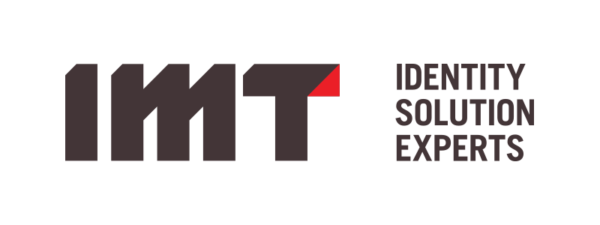Brian Eckhart, CEO – Part #2 of the Semarchy Guest Blog Series
In our last blog post, we outlined the most strategic uses for Master Data Management (a.k.a. EMPI) in Healthcare that elevate consumer engagement, improve revenue cycle management and interoperability.
Healthcare is very unique in the maturity and breadth of its “Health Information Management” (HIM) discipline. Recording of best practices for medical records can be found in large teaching hospitals as early as the 19th century.
Today we would like to share our knowledge, collected over 25 years implementing Master Data Management in some of the largest and most complex healthcare environments, of the data management challenges that are unique to healthcare data – and what you should expect from a Data Hub.
Duplicate records contribute to quality, cost, and safety issues.
Duplicate records are a clinical error condition (providers and/or payers do not have all the clinical or benefit information) and these ultimately increase the costs of healthcare (unnecessary tests, contra-indications, overpayments, etc.) When duplicate records are created, early detection and correction by a “data steward” is critical. A Data Hub must provide the ability to create complex record survivorship rules, approval workflows, federated data stewardship, and the ability to extend the enterprise search – one of our clients decreased their duplicates creation by 66% when the enterprise search of the Data Hub was extended right to the point of registration.
Updates that change an identity create serious clinical risk.
Receiving updated patient data from source systems is a good thing, but demographic updates that incorrectly change the identity of a record is a serious clinical error that healthcare calls a “Potential Overlay”. Potential Overlays occur when a record (Winston Johns Sr., age 55) is updated in error and changes the identity (John Winston, age 33). This can result in a patient being admitted in the hospital, but the clinical staff is looking at someone else’s chart. A Data Hub must be able to identify these conditions and alert HIM and patient safety staff in real time.
Sharing identifiers may indicate bigger problems.
Different individuals sharing important identifiers such as social security, provincial health, driver’s license numbers or insurance ids can indicate potentially fraudulent activity or an error in how patient data was captured in the patient’s chart. Healthcare tourism is an increasingly complex issue. A Data Hub must be configurable to “watch” for shared identifiers and alert data integrity staff when the condition appears.
Data Quality is not optional and must be efficient.
As you can see from above, data stewardship is not optional for either providers or payers in healthcare. A hallmark of healthcare information is an extremely high degree of data accuracy and data integrity to ensure patient safety and to build trust between care providers and patients. A 2018 PEW study showed that a vast majority of healthcare stakeholders felt that “software and personnel investments lead to the perception of patient matching as expensive to resolve”.
A must be able to address these challenges and we see several areas where a Next Generation Data Hub can be effective:
- Data Enrichment: The Data Hub must be able to integrate with external reference data sources to bring additional data or standardized data back into the hub to increase match rate efficiency. Common examples in healthcare include obtaining a National Provider ID (NPI) from the NPPES NPI Registry and standardized addresses from various providers.
- Intelligent Data Stewardship: We will avoid the overused term “AI”, but Machine Learning is certainly a part of intelligent data stewardship. Organizations today are looking for the ability to create intelligent task assignments to specialized data stewards based on task types, location, client, etc. Machine Learning is desired to be able to examine large volumes of tasks with common characteristics and make recommendations on changes to matching parameters or business processes.
- Source System Data Quality Compliance: Organizations are looking for Data Hubs to be able to assist them with advanced analytics and ML techniques that monitor the data quality of source systems over time and identify source system data quality issues that are decreasing the overall effectiveness of a data stewardship group.
A Data Hub is about far more than just clean data.
A Bipartisan Policy Center report published in February 2019 states:
“Patients without means / skills to manage their healthcare incur costs up to 21% more than those highly engaged. It’s time to bring the same 21st century interoperability to healthcare as banking and cell phones”
Indeed, the most consequential changes we have seen over the past 5 years are how leaders in Health Information Management that understand this are re-casting the role of the traditional “EMPI”. These changes are summarized in the table below:
First Generation MDM Data Hub | A Next Generation Data Hub |
| Data Focused – “Build an E.H.R.” | Service Focused –” Know Your Patient/Client” |
| Operational – “Keep the Data Clean” | Operational & Analytical – “Data Insights” |
| One Business Owner – H.I.M. | Multiple Business Owners – “Shared Governance” |
| Single Domain – Patient / Client | Multiple Domains – Patient, Provider, Public, etc. |
| Single Style – Registry | Coexistence – Registry, Physical, Reference, etc. |
| Internal Stakeholder Access Only | External Stakeholders – Consent Models |
| Simple Data Stewardship | Complex DS – ML, AI, Workflows, Alerts |
| On-Premises Deployment | Cloud / Virtualized Rapid Deployment |
In our next post, we will cover what you need to consider in an implementation partner and share our real-world successes with data management in healthcare in partnership with some of the most complex healthcare organizations.





